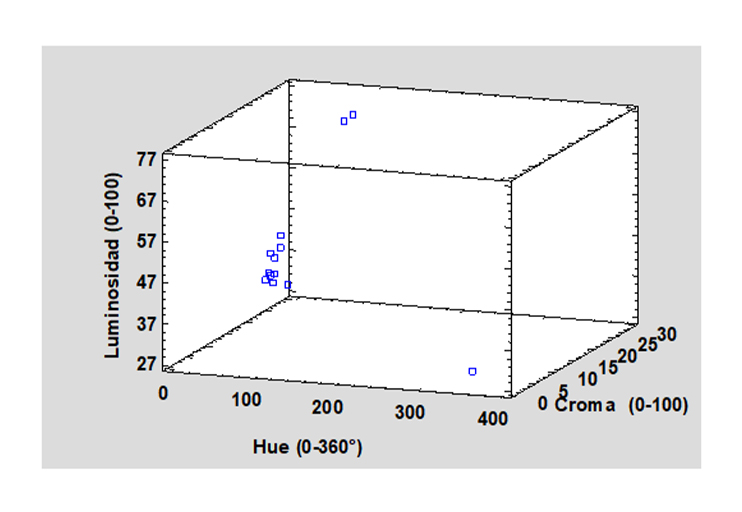Quality of seeds of native corn from the Altos de Jalisco region
DOI:
https://doi.org/10.29312/remexca.v16i7.3625Keywords:
Elotes Occidentales, germination, grain color, physical integrityAbstract
The loss in physiological quality increases when the temperature and relative humidity in storage are high. Hypothetically, the physiological quality of the seeds of native corn preserved by producers is low. This work aimed to evaluate the physiological quality of native corn seeds collected in the Altos de Jalisco region, Mexico. In May 2022, 21 samples of native corn were collected in the Altos de Jalisco Region. The tests carried out were weight of 100 seeds, germination, analysis of physical integrity, and grain color. In the weight of 100 seeds, the collections belonging to the Elotes Occidentales breed were the highest. Ten of the 21 collections did not exceed 90% germination. None of the mean variables for physical integrity showed significant differences. There were two accessions with white and yellow grain colorations that differ from what has been reported in the literature.
Downloads
References
Barrera-Guzmán, L. A.; Legaria-Solano, J. P. y Ortega-Paczka, R. 2020. Diversidad genética en poblaciones de razas mexicanas de maíz. Revista Fitotecnia Mexicana. 43(1):121-125.
Castañeda-Zavala, Y.; González-Merino, A.; Chauvet Sánchez, M. y Ávila Castañeda, J. F. 2014. Industria semillera de maíz en Jalisco: actores sociales en conflicto. Sociológica (México). 29(83):241-279.
CONABIO. 2011. Comisión Nacional para el Conocimiento y Uso de la Biodiversidad. Proyecto global de maíces nativos. Biodiversidad Mexicana. México, DF. https://www.biodiversidad.gob.mx/genes/proyectoMaices.
De Mendiburu, F. 2009. Plot. Graph. Freq. Package ‘agricolae’. 87 p.
Ebone, L. A.; Caverzan, A. and Chavarria, G. 2019. Physiological alterations in orthodox seeds due to deterioration processes. Plant Physiol. Biochem. 145(1):34-42.
Google. 2022. Los Altos de Jalisco. Google Maps. https://www.google.com/maps.
ISTA. 2016. International Rules for Seed Testing. Bassersdorf: International Seed Testing Association. Bassersdorf, Switzerland. 296 p.
Magdaleno-Hernández, E.; Magdaleno-Hernández, A.; Mejía-Contreras, A.; Martínez-Saldaña T.; Jiménez-Velázquez, M. A.; Sánchez-Escudero J. y García-Cué, J. L. 2020. Evaluación de la calidad física y fisiológica de semilla de maíz nativo. Agricultura, Sociedad y Desarrollo. 17(3):569-581.
Manuel-Rosas, I.; Gil-Muñoz, A.; Ramírez-Valverde, B.; Hernández-Salgado, J. H. y Bellon, M. 2007. Calidad física y fisiológica de semilla de maíz criollo almacenada en silo metálico y con métodos tradicionales en Oaxaca, México. Revista Fitotecnia Mexicana. 30(1):69-69.
Miya, S. P.; Modi, A. T. and Mabhaudhi, T. 2017. Interactive effects of simulated hail damage and plant density on maize seed quality. Seed Science and Technology. 45(1):100-111.
Ramírez-Díaz, J. L.; Alemán-Torre, I.; Bautista-Ramírez, E.; Vidal-Martínez, V. A.; Salinas-Moreno, Y. y Ledesma-Miramontes, A. 2021. Respuesta de híbridos subtropicales de maíz a la densidad de población. Revista Fitotecnia Mexicana. 44(2):173-173.
Ron, P. J.; Sánchez, G. J. J.; Jiménez, C. A. A.; Carrera, V. J. A.; Martín, L. J. G.; Morales, R. M. M.; L. Cruz, L.; Hurtado, P. S. A.; Mena, M. S. y Rodríguez, F. J. G. 2006. Maíces nativos del occidente de México I. Scientia-CUCBA. 8(1):1-139.
Salinas-Moreno, Y.; Ramírez-Díaz, J. L.; Alemán-Torre, I.; Bautista-Ramírez, E. y Ledesma-Miramontes, A. 2021. Evaluación de dos procedimientos de medición de color en granos de maíces pigmentados. Revista Mexicana de Ciencias Agrícolas. 12(7):1997-1303.
Salinas-Moreno. Y. y Vázquez-Carrillo G. 2006. Metodologías de análisis de la calidad nixtamalera-tortillera en maíz. INIFAP. Folleto técnico núm. 24. 98 p.
SNICS. 2020. Servicio Nacional de Inspección y Certificación de Semillas. Reglas para la calificación de semillas: Maíz (Zea mays L.). Ciudad de México. 34 p.
Souza, F. I. J.; Devilla, I. A.; Souza, R. T.; Teixeira, I. R. and Spehar, C. R. 2016. Physiological quality of quinoa seeds submitted to different storage conditions. African Journal Agricultural Research. 11(1):1299-1308.

Published
How to Cite
Issue
Section
License
Copyright (c) 2025 Revista Mexicana de Ciencias Agrícolas

This work is licensed under a Creative Commons Attribution-NonCommercial 4.0 International License.
The authors who publish in Revista Mexicana de Ciencias Agrícolas accept the following conditions:
In accordance with copyright laws, Revista Mexicana de Ciencias Agrícolas recognizes and respects the authors’ moral right and ownership of property rights which will be transferred to the journal for dissemination in open access. Invariably, all the authors have to sign a letter of transfer of property rights and of originality of the article to Instituto Nacional de Investigaciones Forestales, Agrícolas y Pecuarias (INIFAP) [National Institute of Forestry, Agricultural and Livestock Research]. The author(s) must pay a fee for the reception of articles before proceeding to editorial review.
All the texts published by Revista Mexicana de Ciencias Agrícolas —with no exception— are distributed under a Creative Commons License Attribution-NonCommercial 4.0 International (CC BY-NC 4.0), which allows third parties to use the publication as long as the work’s authorship and its first publication in this journal are mentioned.
The author(s) can enter into independent and additional contractual agreements for the nonexclusive distribution of the version of the article published in Revista Mexicana de Ciencias Agrícolas (for example include it into an institutional repository or publish it in a book) as long as it is clearly and explicitly indicated that the work was published for the first time in Revista Mexicana de Ciencias Agrícolas.
For all the above, the authors shall send the Letter-transfer of Property Rights for the first publication duly filled in and signed by the author(s). This form must be sent as a PDF file to: revista_atm@yahoo.com.mx; cienciasagricola@inifap.gob.mx; remexca2017@gmail.
This work is licensed under a Creative Commons Attribution-Noncommercial 4.0 International license.


